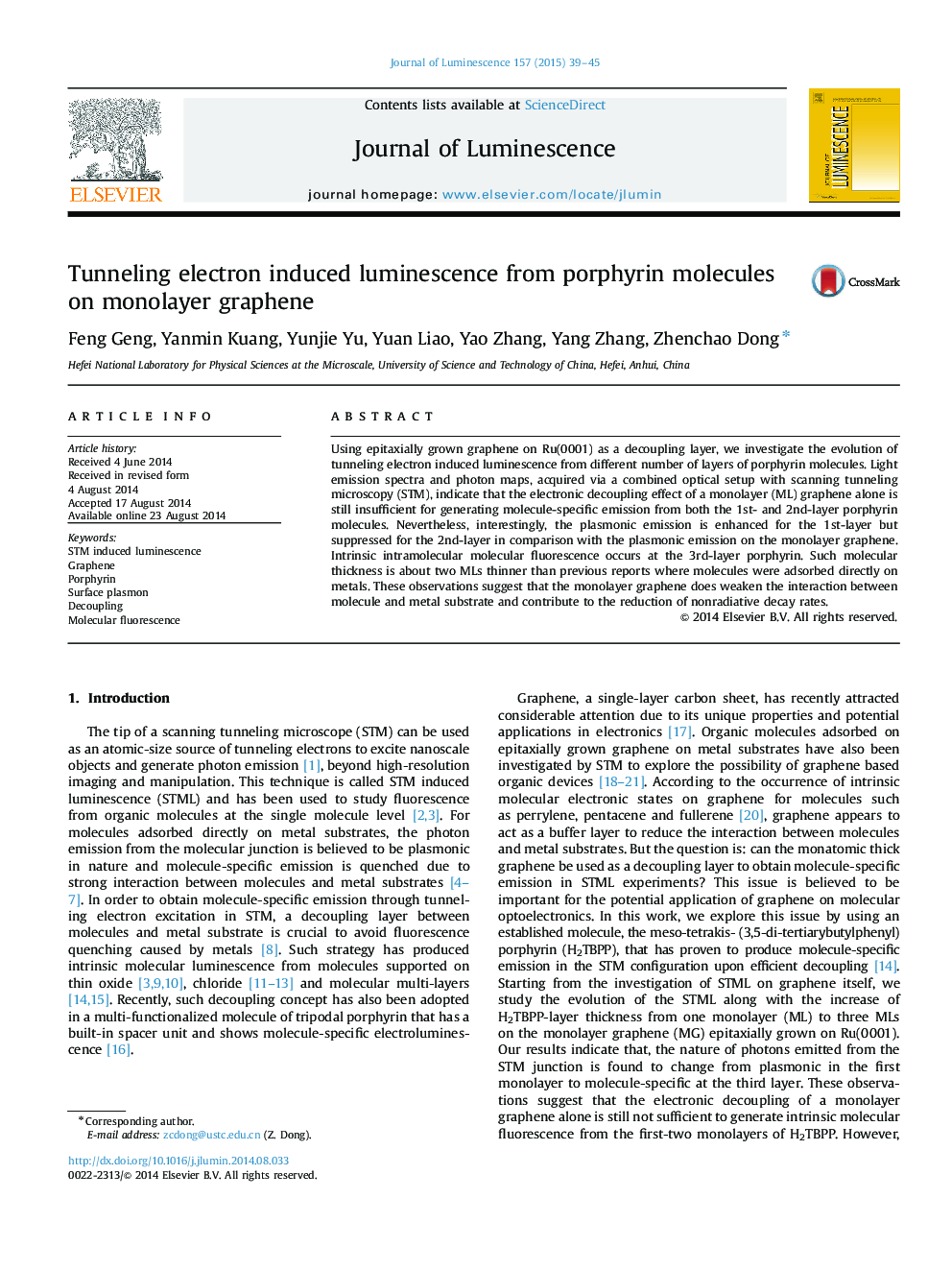| Article ID | Journal | Published Year | Pages | File Type |
|---|---|---|---|---|
| 5399471 | Journal of Luminescence | 2015 | 7 Pages |
Abstract
Using epitaxially grown graphene on Ru(0001) as a decoupling layer, we investigate the evolution of tunneling electron induced luminescence from different number of layers of porphyrin molecules. Light emission spectra and photon maps, acquired via a combined optical setup with scanning tunneling microscopy (STM), indicate that the electronic decoupling effect of a monolayer (ML) graphene alone is still insufficient for generating molecule-specific emission from both the 1st- and 2nd-layer porphyrin molecules. Nevertheless, interestingly, the plasmonic emission is enhanced for the 1st-layer but suppressed for the 2nd-layer in comparison with the plasmonic emission on the monolayer graphene. Intrinsic intramolecular molecular fluorescence occurs at the 3rd-layer porphyrin. Such molecular thickness is about two MLs thinner than previous reports where molecules were adsorbed directly on metals. These observations suggest that the monolayer graphene does weaken the interaction between molecule and metal substrate and contribute to the reduction of nonradiative decay rates.
Related Topics
Physical Sciences and Engineering
Chemistry
Physical and Theoretical Chemistry
Authors
Feng Geng, Yanmin Kuang, Yunjie Yu, Yuan Liao, Yao Zhang, Yang Zhang, Zhenchao Dong,
